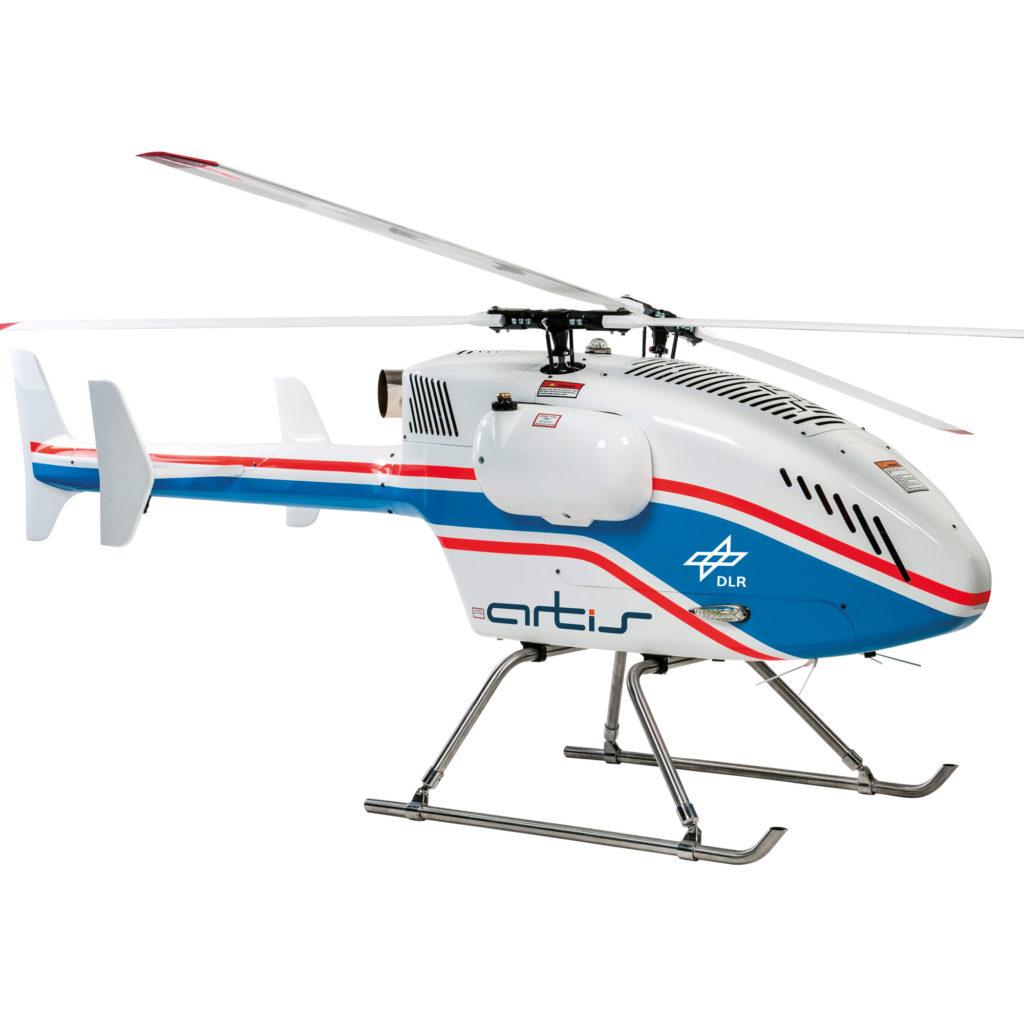DLR‘s unmanned research helicopter
The DLR Institute of Flight Systems has been operating unmanned helicopters with a maximum take-off weight of over 80 kilograms under the name superARTIS since 2012. In 2015, two new SDO 50V2 helicopters, developed by SwissDrones Operating AG, became operational. Demanding automated flight missions are developed and tested using these systems, and supported by a sophisticated simulation environment. The research focuses on autonomous environment perception, flight path planning, flight control for agile manoeuvres and navigation methods considering satellite navigation interferences. Thanks to its high payload capacity, range and air speed, superARTIS is able to fly on demanding research missions over the sea, together with other aircraft, or as a platform for multi-sensor systems.
Project highlights:
- Innovation in humanitarian aid with the World Food Programme and Wings for Aid
Objective: To test an airdrop concept for the delivery of relief supplies beyond line of sight, dropping them
in a realistic operational area. - Manned-unmanned teaming
To safely operate manned and unmanned helicopters as a team in shared airspace. - Flight campaign in Vidsel (northern Sweden)
Objective: Operation of an unmanned helicopter beyond line of sight, under demanding environmental
conditions and together with other aircraft. - ATON (Autonomous Terrain-based Optical Navigation)
Objective: To use an unmanned helicopter as a demonstrator for navigation procedures to be used during
autonomous Moon landings (crater navigation and landing site reconnaissance). - Fast rotorcraft
Objective: Flight operations at the edge of the flight envelope, expansion of high-speed flight capabilities, flight test methods for uncrewed aerial vehicles.
German Aerospace Center (DLR)
Gordon Strickert · E-Mail: gordon.strickert@dlr.de · DLR.de/en

Downloads
| Factsheet_superARTIS_GB_PAS2019 File-size: 105874, pdf |